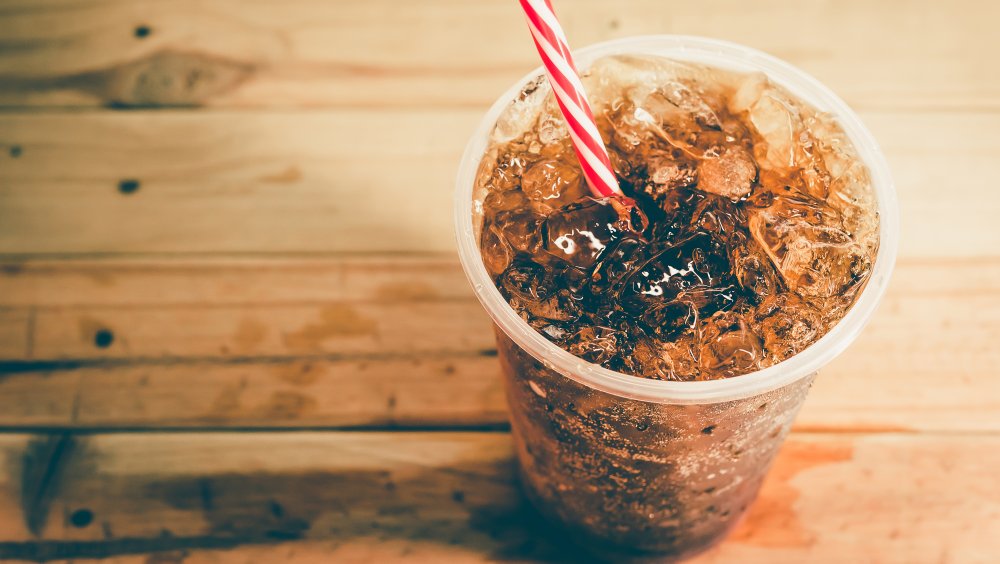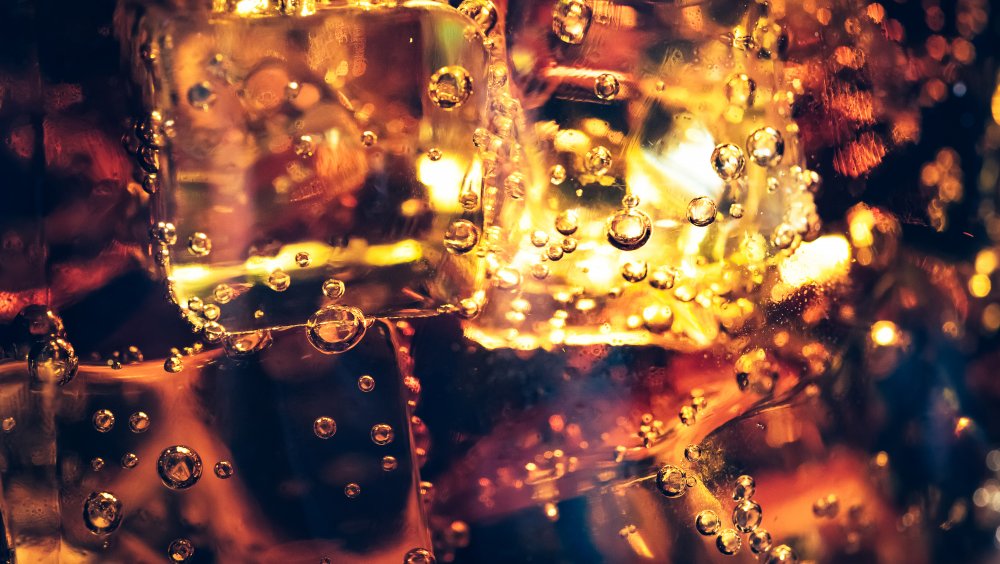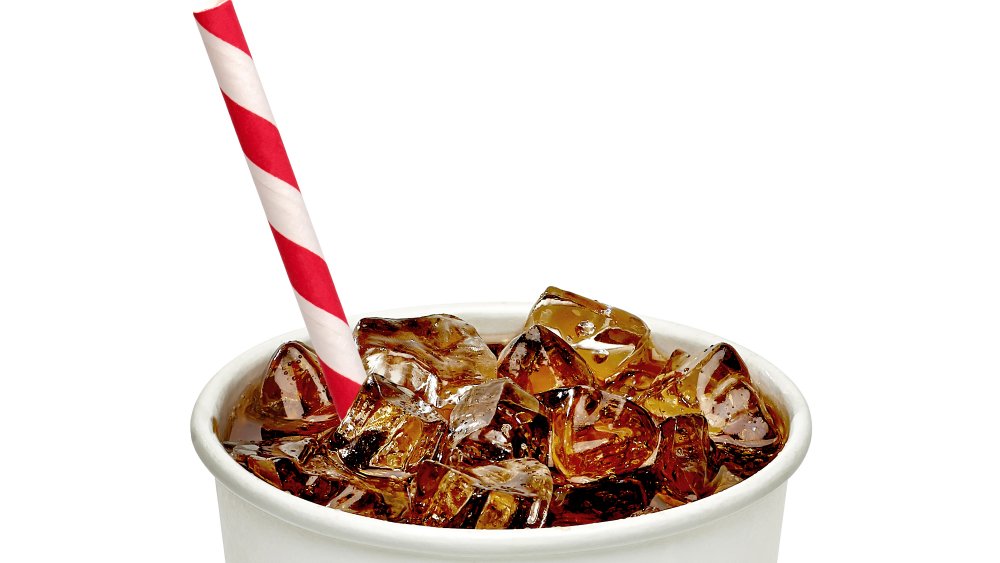Why Fountain Drinks Taste Different
For true soda snobs and sensitive palates alike, all soda is not created equal. Many consumers claim they can tell the difference between canned and bottled sodas. Others swear that McDonald's Coca-Cola tastes better. Some crave only cane-sugar varieties, like Mexican Coke.
Then you have your outspoken fountain soda fans. Yes, there have been insider reports of not-so-sanitary conditions (think mold and cockroaches) literally clogging up soda fountains' reputation (via Thought Catalog). But fountain sodas have enough of a fan base to prompt posts on Reddit asking the question: Why does it taste so much better?
Turns out that there are several reasons for the different taste sensations customers have come to suspect from fountain sodas. Temperature, straws, cups, ice cubes, carbonation, water sources, and the varying levels of sweetness achieved with different ratios of fountain soda syrups all play a role in its unique taste — for better or worse.
Fountain soda's three main components: water, syrup, and bubbles
According to Insider, fountain sodas "are mixed from flavored syrup and carbonated water right in the machine," which may lead to variations in the ratio of syrup to water (the reason why those aforementioned soda snobs often have a preference on exactly where they purchase). But, in general, MSN reports that fountain machines use "bag-in-box" syrup, usually mixing 1 part syrup to 5 parts water.
Then there's the question of carbonation. In a typical machine, carbonated water mixes with the syrup "right at the dispenser head as the product hits the cup" (via HowStuffWorks). Today notes that the machine's pressure maintains the proper level of carbonation and "needs to be constantly calibrated," but if this step is not followed by the operator, soda sippers receive a product that, unfortunately, falls flat.
With 5 parts water in a fountain soda, not to mention the ice that's usually added, the water in an establishment definitely affects the end product. MSN points out that a business like McDonald's uses filtered water for consistency across locations, but local purveyors may use tap water, leading to different tastes according to region.
Similarly, ice itself can also impact flavor. Insider notes that, aside from its cooling properties, ice diminishes the drink's sweetness as it melts — a side effect that some prefer, and others complain tastes watered-down. Even ice shape matters, as Today explains that "crushed or 'chewable' ice ... has more surface area for the bubbles to grab onto."
How cups and straws influence the taste of fountain sodas
A soda's serving container may also come into play. Some experts claim that tall glasses are optimal for holding carbonated beverages so that the carbonation can move around and "continue to mix the drink" — by contrast, aluminum cans release carbonation faster, followed by glass and plastic (via Today). And fountain sodas' flavors aren't tainted by polymer-lined containers like one finds in soda cans, or a transfer of acetaldehyde, which may occur with plastic bottles (via MSN).
Finally, straws impact the overall fountain experience. For example, Business Insider reports that McDonald's believes its wider straw is a key component behind its superior soda flavor, "so all that Coke taste can hit all your taste buds," according to the company. Materials count, too, as the fast-food giant found when it tried to replace plastic with paper straws, a move that was quickly "hated" by the general public and even spurred online sales of the old versions (via The Sun).
But regardless of construction, Today explains that straws in general allow for reaching the cup's bottom, "where the drink is more likely to still be mixed in the right proportion of syrup to carbonated water," since the water and syrup can separate over time. Who knew that such a seemingly simple treat like fountain soda could be so scientific?


